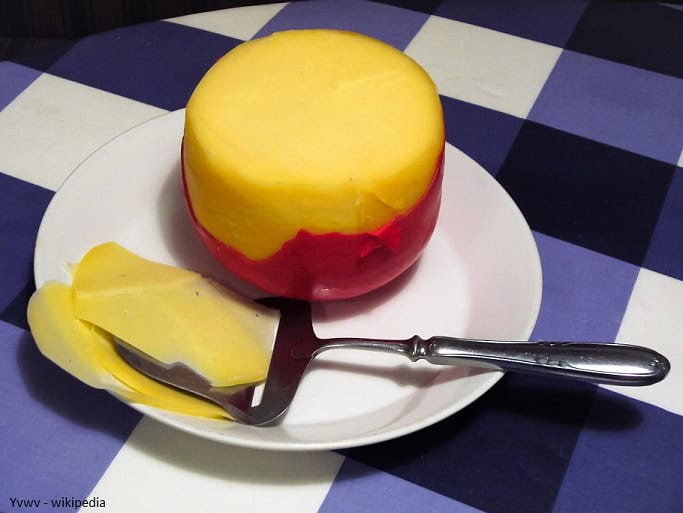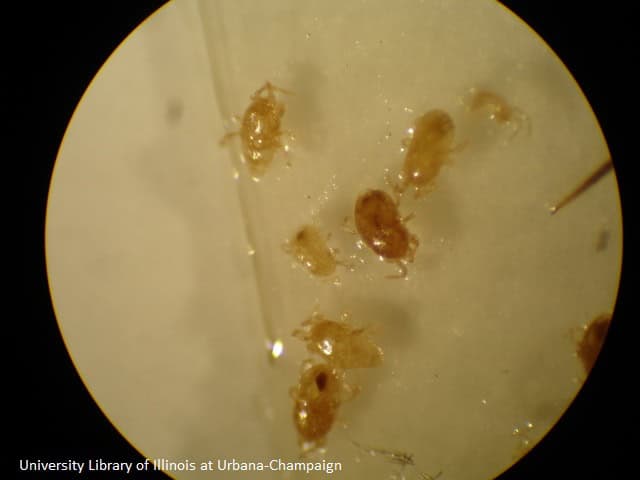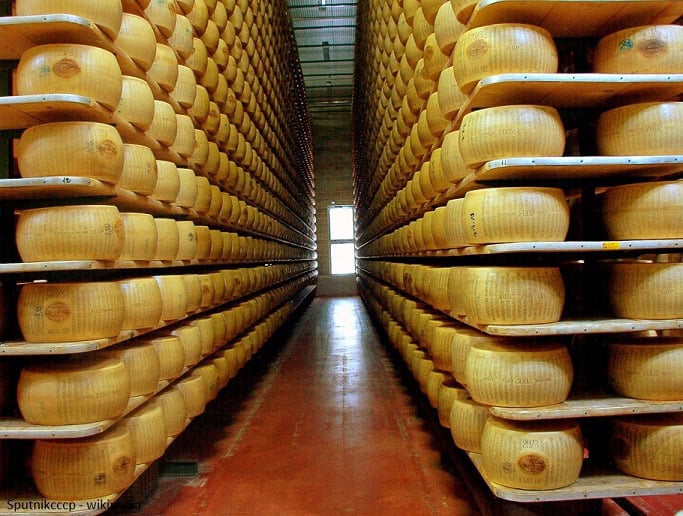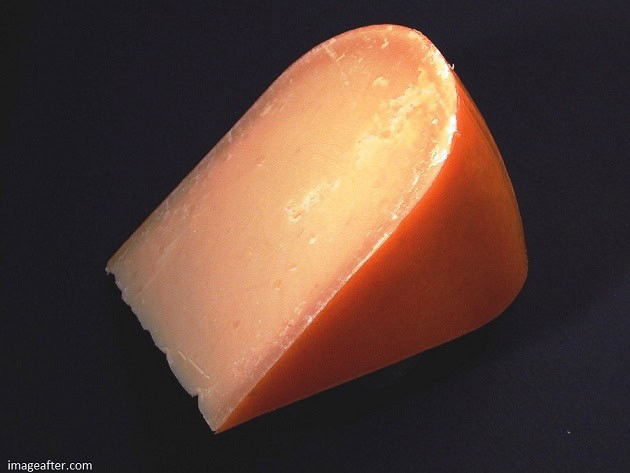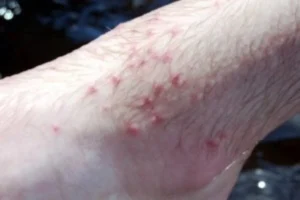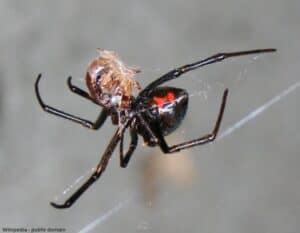Cheese Mites – France’s Mimolette
The next time you´re eating out, you may think twice about ordering “extra cheese.” Did you know that some cheeses have mites? And there are other cheeses that have maggots? What´s gross to some of us is but a delicacy to others…. personally, I love cheese and like trying different varieties but after researching cheese mites, I´ve decided a part-time job as a cheese connoisseur is not for me!
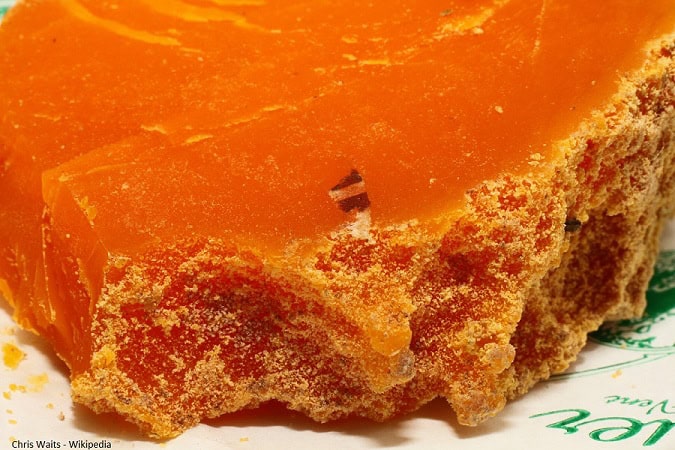
French Mimolette Cheese: The textured crust is caused
by cheese mites. Doesn’t look too unusual, right? Keep reading!
Boule de Lille
Mimolette (“Boule de Lille”) is a mite-ridden cheese produced in Lille, France. Cheese mites living on the surface of the cheese contributes to its flavor and gives the cheese a distinctive appearance. These are Acarus siro mites, also known as flour mites. The mites are intentionally placed on the cheese and the action of the mites gives the cheese its greyish color and crusty appearance.
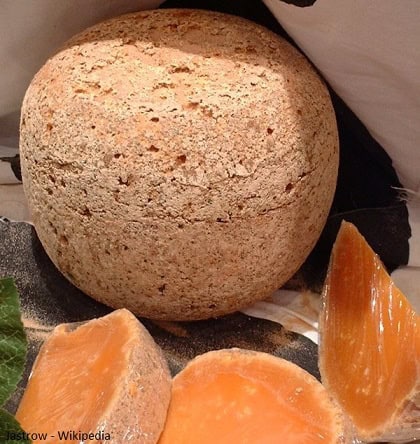
Mimolette Cheese Ball – the is crust created by mites.
French Mimolette (me-MOH-let) can be consumed at different stages of aging. The price apparently increases with the age of the cheese. Younger Mimolette (6 months or under) taste like a mild cheddar but most people who enjoy this cheese prefer it “extra-old” (over 18 months). Old Mimolette is harder to chew but it has a hazelnut-like flavor that people evidently like better than the younger, milder cheese.
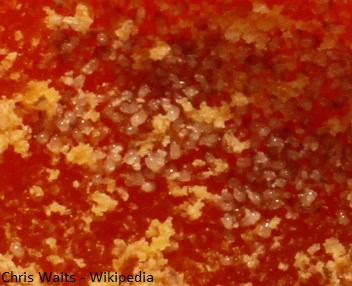
Close-up of Mimolette cheese with mites.
The History of Mimolette Cheese
Mimolette dates back to the reign of Louis XIV, who prohibited the import of Edam, a Dutch cheese, into France. The residents in the northernmost region of France had strong cultural ties to Holland and loved the Dutch´s cheese. They had to either smuggle in the contraband cheese or try making one of their own. Louis XIV ordered a national cheese be made, similar to Edam, but he had it colored orange to differentiate it from the Dutch cheese.
France´s Louie XIV banned Dutch cheese and
created Mimolette to emulate Edam (Dutch cheese).
Mimolette is a semi-hard cheese that has the same texture and spherical shape as Dutch Edam, but with a natural rind. It is produced in large balls about the size of a 7-pound bowling ball. This cheese is very popular with the French and only produced in France. However, if you are brave enough to try it, or you are a die-hard cheese connoisseur, Mimolette can be ordered from various online companies carrying specialty cheeses.
Dutch Edam cheese has a nutty flavor but created without mites!
From what I’ve read, at first it tastes like regular cheddar but then the aftertaste has a nutty quality to it, and sometimes hints of fruit or caramel. My curiosity is beginning to peak…….I just might have to try it myself.
Mitey Action
Of course, to look at Mimolette cheese, you don´t really see the cheese mites. What you do see looks like dust on the cheese. The mites are microscopic and burrow their way through the rind to help the cheese breathe; the crust is where the mites are so if you eat just the inside, you won’t actually eat mites. The use of mites to ripen cheese was an ancient tradition even before Louis XIV´s request to create a national French cheese.
The cheese mites used in Mimolette to enhance its
flavor are actually flour mites.
Scientists are not exactly sure how these mites cause the cheese to have a nutty, fruity, aroma and flavor (maybe it´s the mites themselves that taste nutty and fruity?) The flour mite, we know, is used on purpose for Mimolette and other specialty cheeses, but just because it´s produced overseas doesn´t mean we are all safe from cheese mites……evidently, cheese mites are a pest in our North American cheese storage facilities. They grow in conditions greater than 4°C and 60% humidity, which are common storage practices for cheese ripening.
Video of Cheese Mites in Action
Controlling Unwanted Cheese Mites
Cheese mites at certain stages of their growth are often distributed by attaching themselves to clothing or on a person´s body and carried into storage rooms.
Clean curing facilities keeps mites away.
This one is for Parmesan Cheese.
They can also be carried on air currents and easily find their way into cheese rooms. Many curing rooms, therefore, have a small number of mites even though they do not appear in numbers large enough to cause any visible damage to the cheese. The cheese mites can also crawl from one cheese to another. Workers in a cheese storage room are most likely the main source of transportation for these tiny insects.
Cheese with paraffin (wax) keeps mites out.
Good news! – Cheese rooms that make it a practice, several times a year, to scrub walls, ceilings, and floors as well as storage shelves can keep mites at bay. Cheese mites are destroyed if they are exposed to scalding water at temperatures above 160°F. Old cheese, if properly paraffined, is able to stay in the cheese curing room or storage facility without the threat of infestation.
Next time you go out to eat and want more cheese, ask “Extra cheese please -but hold the mites!”
Article by Donna Walker
References:
Price, Walter V. Cheese Mites Department of Dairy Industry, 1938
Ontario Department of Agriculture, Ontario Agricultural College, Guelph, Canada.

